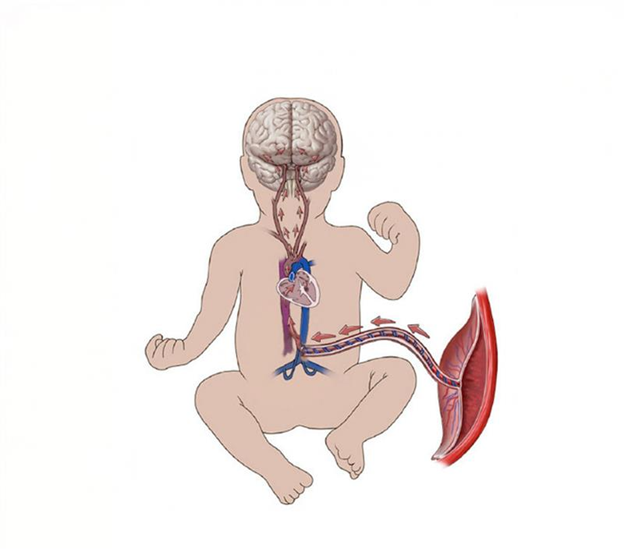Hypoxic-Ischaemic Encephalopathy of Newborns, often abbreviated as HIE, is a condition that affects many infants worldwide. It occurs when a baby does not get enough oxygen during birth, which can cause extensive brain injury. Understanding the causes, symptoms, and treatment options is essential for both parents and healthcare providers.
Demystifying Hypoxic-Ischaemic Encephalopathy: Causes, Symptoms, and Long-Term Effects
Hypoxic-Ischaemic Encephalopathy in Newborns is a serious condition resulting from oxygen deprivation. When a newborn’s brain lacks sufficient oxygen, it can lead to significant damage. Unfortunately, oxygen deprivation, or asphyxia in newborn, can occur at different stages: prenatal, during delivery, or postnatal.
- Common causes of asphyxia in newborns include complications during labor, such as umbilical cord problems, maternal health issues, or prolonged labor.
- Perinatal asphyxia management strategies aim to address these complications swiftly to minimize the risk.
Recognizing the asphyxia symptoms in newborns is crucial. Symptoms can vary but often include:
- Seizures
- Weak muscle tone
- Poor feeding
These symptoms can be early indicators of HIE and require immediate medical attention. The long-term impact of newborn brain injury can be profound. Long term effects of HIE in infants may manifest as developmental delays, learning difficulties, or conditions like cerebral palsy. Mild HIE long term effects might include subtle cognitive impairments, underscoring the importance of early diagnosis and intervention.
Advancements in Neonatal Care: Innovative Treatments for HIE Newborns
In recent years, advancements in hypoxic-ischaemic encephalopathy treatment have shown promise. A key development is therapeutic cooling for neonates, also known as newborn hypothermia treatment. This approach involves lowering the baby’s body temperature to reduce brain injury. Therapeutic cooling newborn treatments are typically initiated within the first few hours after birth.
Emerging technologies continue to evolve, offering hope for better HIE newborn care. Current research explores innovative therapies and diagnosis methods to improve outcomes. Implementing hypothermia therapy for newborns has already reduced severe injury instances. Such interventions hold the potential to transform the prognosis for HIE infants, making timely treatment critical.
Proactive Parental Guidance: Identifying and Responding to Birth Complications
For expectant parents, being informed about birth challenges and HIE diagnosis methods is key. Understanding the signs of neonatal asphyxia causes can prompt faster responses from medical professionals. Signs of distress during labor include:
- Decreased fetal movement
- Abnormal fetal heart rate
Recognizing these can lead to quick interventions, which significantly improve a newborn’s prognosis. Consequences of birth asphyxia are serious; thus, swift medical intervention cannot be overstated. Parents play a vital role in being vigilant and actively involved during labor. Awareness and proactive communication with healthcare providers can make a significant difference in preparing for any complications.
Preventive Measures and Education: Reducing Risks of HIE

Reducing the risk of neonatal asphyxia begins during pregnancy. Expectant parents can take several steps:
- Ensure consistent prenatal care
- Monitor fetal movements regularly
- Discuss any health concerns with a healthcare provider promptly
Prevalence of birth asphyxia worldwide varies, but prenatal monitoring is crucial in all contexts. In countries like India, tailoring preventive measures to suit local healthcare challenges can make a difference. Ensuring access to quality prenatal care is vital for reducing potential complications. Educating parents about neonatal asphyxia causes equips them to take preventive actions, lowering the risk of HIE in infants symptoms occurring.
Living with Hope: Support Systems and Future Prospects for HIE Families
For families navigating life with HIE infants, support systems are invaluable. Stories of resilience abound as families adapt and find ways to support their child’s growth. Long-term care strategies often involve ongoing therapy, focused on enhancing child development outcomes.
- Physiotherapy to improve motor skills
- Speech therapy for communication
- Special education programs
Advancing pediatric care also provides promising developments. Research continues to explore new treatments and interventions. HIE newborn care prioritizes not just immediate treatment but also long-term support. Community networks and healthcare professionals play a crucial role in this support system.
Families benefit from connecting with others who share similar experiences, fostering community support. Healthcare providers often recommend support groups or counseling services to ease the journey. HIE diagnosis methods continue to improve, offering hope and more substantial support for families.
In conclusion, understanding Hypoxic-Ischaemic Encephalopathy of Newborns involves recognizing symptoms, pursuing early treatment, and relying on community support. With continued research and innovative treatments, the future is optimistic, offering improved quality of life for affected infants and hope for their families.
Early Detection. Expert Care. Brighter Futures — At Sun Hospitals
At Sun Hospitals, we specialize in advanced neonatal care for conditions like Hypoxic-Ischaemic Encephalopathy (HIE). With cutting-edge treatments like therapeutic cooling, we aim to minimize brain injury and improve long-term outcomes.
- 24/7 Neonatal Intensive Care Unit (NICU)
- Experienced neonatologists and multidisciplinary support
- Comprehensive guidance for parents and families
Worried about birth complications or HIE risk?
Call Sun Hospitals today
Sun Hospitals – Safeguarding tiny lives with big care.


